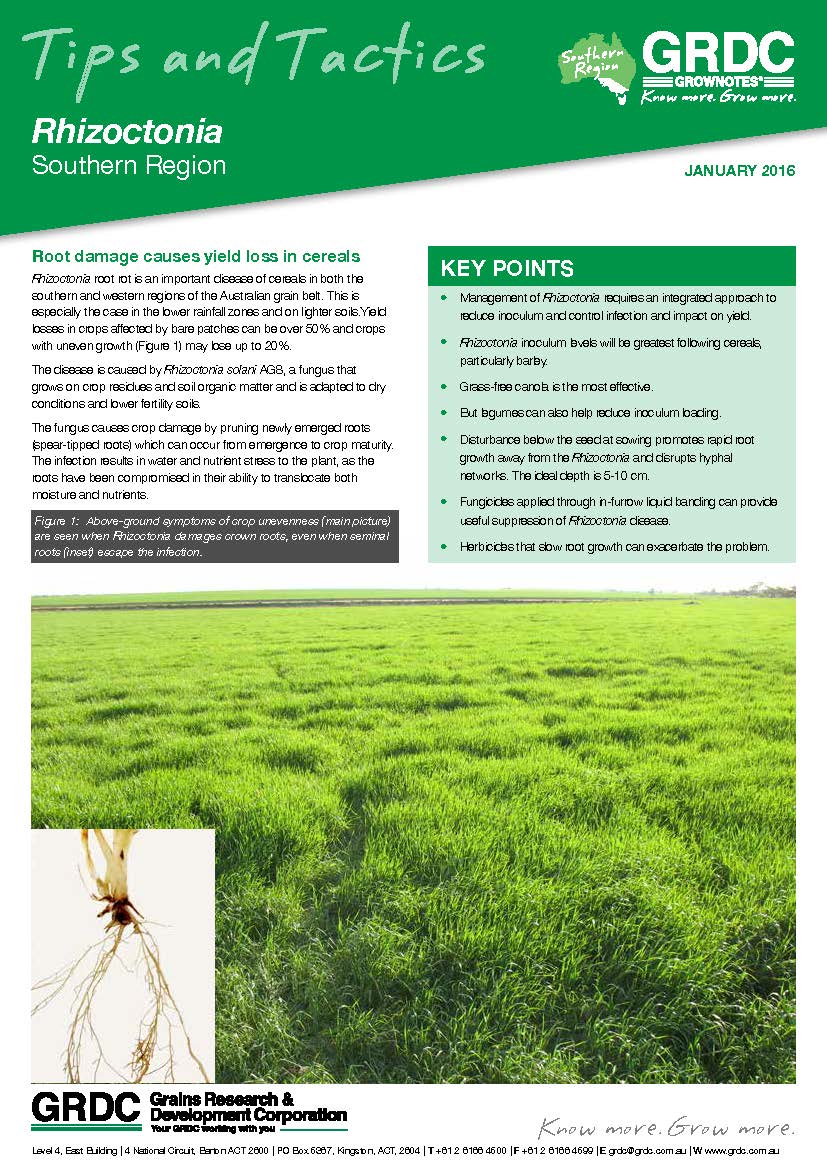Rhizoctonia
Rhizoctonia
Published: 24 Feb 2016

Key points
- Management of Rhizoctonia requires an integrated approach to reduce inoculum and control infection and impact on yield.
- Rhizoctonia inoculum levels will be greatest following cereals, particularly barley.
- Grass-free canola is the most effective.
- But legumes can also help reduce inoculum loading.
- Disturbance below the seed at sowing promotes rapid root growth away from the Rhizoctonia and disrupts hyphal networks. The ideal depth is 5-10 cm.
- Fungicides applied through in-furrow liquid banding can provide useful suppression of Rhizoctonia disease.
- Herbicides that slow root growth can exacerbate the problem.
Want to link to these publications?
Use www.grdc.com.au/TT-Rhizoctonia to keep up-to-date
Region South, West
- 987.79 kb GRDC Tips and Tactics Rhizoctonia WESTERN (Web version) Tips and Tactics for managing Rhizoctonia Root rot. Root rot is caused by Rhizoctonia solani AG8, a fungus that grows on crop residues and soil organic matter. Management of Rhizoctonia requires an integrated approach to reduce inoculum and control infection and impact on yield.
- 716.31 kb GRDC Tips and Tactics Rhizoctonia SOUTHERN (Web version) Tips and Tactics for managing Rhizoctonia Root rot. Root rot is caused by Rhizoctonia solani AG8, a fungus that grows on crop residues and soil organic matter. Management of Rhizoctonia requires an integrated approach to reduce inoculum and control infection and impact on yield.
- 6.05 mb GRDC Tips and Tactics Rhizoctonia SOUTHERN (Print version) Print version of 'Tips and Tactics Rhizoctonia' for the Southern region
Region: South; West
GRDC Project Code: DAW1306-004RMX,
